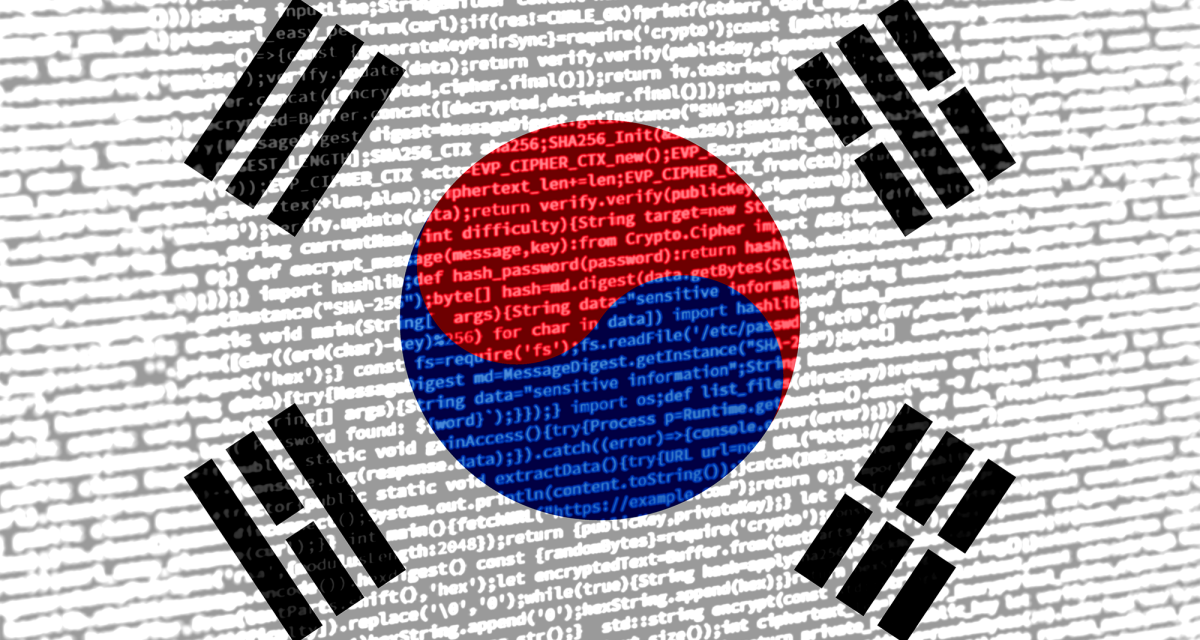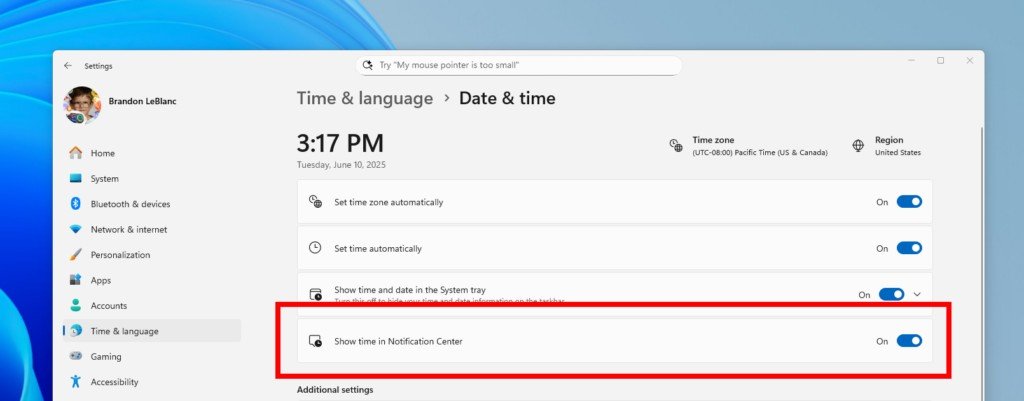AI Research
South Korea Looks to Canadian Energy to Fuel its AI Ambitions

Artificial intelligence (AI) and clean energy technologies have emerged as central policy pillars of the new Lee Jae Myung government in South Korea, as part of his administration’s strategy to revitalize the economy.
Recognizing that the country has lagged behind global leaders such as the U.S. and China, both of which have adopted robust industrial policies, Lee’s government plans to introduce a South Korean version of the Inflation Reduction Act, a massive government investment plan to promote key strategic sectors. Similar to the U.S. act, Lee’s initiative aims to provide large-scale subsidies and targeted government financing to accelerate growth in strategic sectors, with AI and clean energy at the forefront.
Within this broader policy shift, the nexus between AI and energy has gained prominence. The rapid scaling up of energy-intensive AI infrastructure has sent energy demand soaring. As a result, South Korea needs to ensure a sustainable and resilient power supply for the digital economy. South Korea is one of the countries leading efforts to integrate energy policy and AI strategy in a way that both promotes innovation and strengthens energy security.
The evolution of South Korea’s AI governance
South Korea laid a foundation for AI governance in its 2024 Framework Act on Artificial Intelligence, one of the world’s first comprehensive national AI laws. Enacted under Lee’s predecessor, Yoon Suk Yeol, the act was designed to foster innovation while ensuring transparency, safety, and public accountability.
Shortly after assuming the presidency in early June, Lee elevated AI to a central role in South Korea’s national growth agenda. His administration’s blueprint aims to position the country among the world’s top three AI powers. Adopting a ‘develop-first, regulate-later’ philosophy, the plan emphasizes ecosystem expansion, including C$97 billion (100 trillion South Korean won) in AI investments, the designation of data centres as critical infrastructure, and the rollout of an “AI Highway” to connect regional tech clusters. Simultaneously, the administration is continuing to build on the AI Framework Act, working to implement its provisions early in Lee’s five-year term to ensure legal stability and time to build public trust, particularly around issues such as data privacy and algorithmic bias.
A notable feature of this approach is integrating the country’s tech-sector leaders into policy roles. For example, the head of Naver’s AI Center was appointed presidential secretary for AI policy, and the president of LG AI Research now serves as minister of science and Information and Communications Technology. In addition, a centralized AI governance body within the presidential office now co-ordinates interministerial initiatives and accelerates regulatory reforms in close dialogue with the private sector.
To ensure that the strategy is well resourced, the government has earmarked C$970 million (1 trillion won) in public investment for AI research and development (R&D), in addition to a C$330-billion (340 trillion won) investment in three ‘game-changing’ technologies: AI semiconductors, advanced biotechnology, and quantum technology. Additionally, a national AI computing centre, costing C$2 billion (2 trillion won), is expected to open by 2027. These developments reflect a national effort to accelerate AI innovation to give South Korea the upper hand in technologies that are indispensable within the global value chain.
Key challenges in the AI–energy nexus
As South Korea pushes forward with its AI agenda, one of its most pressing challenges is building a sufficient and reliable energy supply. The explosive growth of AI infrastructure is substantially increasing demand on South Korea’s energy grid, with wide-ranging implications for both industrial competitiveness and climate goals.
The expansion of AI computing, especially through hyperscale data centres, is driving this steep growth in demand. A landmark 3 gigawatt data centre project in Jeollanam-do Province is expected to go online by 2028 to accommodate the compute intensity of next-generation AI applications. National electricity demand is projected to double by 2030 relative to 2022 levels, driven largely by data centres and semiconductor fabrication plants — two sectors at the heart of South Korea’s digital strategy.
Already, the country’s aging power grid is struggling to keep pace with this growth. Approximately 78 per cent of existing data centre power use is concentrated in the Seoul metropolitan area, straining the city’s local infrastructure. Although the government has pushed to relocate the data centre to other provinces through the Special Act on Distributed Energy (which came into effect in June 2024), to date, no such news of this relocation has been reported. Experts warn that without rapid modernization, grid bottlenecks could compromise supply stability and industrial growth. In response, the government enacted the Power Grid Act in February 2025 to expedite grid expansion, including provisions for enhanced compensation to communities affected by new transmission lines. The act also encourages public-private investment and regulatory reforms to streamline power purchase agreements and other procedures related to utilities.
To support its expanding AI infrastructure and meet AI-driven energy demands, South Korea is turning to liquefied natural gas (LNG) and nuclear power as its main sources of reliable electricity. Plans are underway to convert 28 aging coal-fired plants to run on LNG and to build two new nuclear reactors by 2038, supplementing the four already under construction. In contrast to former president Moon Jae-in’s (2017-22) nuclear phase-out policy, recent developments — including a speech by Lee during the recent election campaign and the appointment of Kim Jeong-gwan, president of Doosan Enerbility (a major national conglomerate deeply engaged in nuclear energy development), as minister of trade, industry and energy — suggest that the current administration recognizes the challenges of relying solely on renewables and the necessity of re-introducing nuclear energy. These signals indicate a pragmatic approach to building a renewables-centred energy system while maintaining energy security.
In the same vein, Seoul also sees small modular reactors (SMRs) as a promising long-term solution for powering AI infrastructure and carbon neutrality. The first 0.7-gigawatt SMR is expected to be deployed by 2036. Meanwhile, Korea Hydro & Nuclear Power (KHNP), one of the Korea Electric Power Corporation’s subsidiaries operating nuclear and hydroelectric plants, is advancing its innovative SMR design, aiming to finalize the standard design by the end of 2025. SMRs are increasingly favoured as a go-to solution to meet soaring AI-driven energy demand, not just in South Korea but elsewhere. For example, large tech companies such as Amazon and Google have pledged to increase their nuclear-power capacity by 2050, paying particular attention to SMRs for their potential to provide localized, carbon-free power generation for data centre clusters and industrial complexes.
Canada–South Korea co-operation: a strategic convergence
No country can achieve the dual goals of securing sustainable energy and fuelling the AI boom on its own. As South Korea bolsters its AI-energy strategy, cross-border collaboration will become indispensable. Canada has emerged as a key partner in this space.
Stable access to critical minerals and nuclear fuel is essential to South Korea’s energy security and growing AI infrastructure. In 2024, 48 per cent of the country’s enriched uranium imports (by value) came from Russia. However, amid heightened geopolitical risk, South Korea is shifting to more secure suppliers. Canada, the world’s second-largest supplier, with an 18 per cent global share in 2024, is expected to play an increasingly vital role. This diversification strategy not only reduces South Korea’s dependence on Russia but also boosts the long-term sustainability of its nuclear power fleet.
Nuclear technology and fuel have long been central to Canada–South Korea technology co-operation. Canada’s CANDU heavy-water reactors form a key part of South Korea’s nuclear infrastructure, with four CANDU reactors currently in operation at Wolsong. The bilateral nuclear co-operation has been well exemplified in the recent memoranda. In 2023, the Korea Atomic Energy Research Institute (KAERI) signed a memorandum of understanding (MOU) with Alberta’s provincial government to explore deploying the South Korea-designed SMART SMRs in Alberta, targeting applications such as oil sand steam generation. In the same year, KAERI and Canada’s Atomic Energy of Canada Limited signed a nuclear R&D MOU focusing on placing South Korean SMR designs into global markets, with an emphasis on collaboration with Canada. In May 2024, KHNP, Canada’s SMR developer, ARC Clean Technology, and New Brunswick Power signed a trilateral agreement to co-develop and deploy the ARC-100 advanced SMR, including mass deployment plans, starting with a demonstration at Point Lepreau, New Brunswick.
Bilateral AI collaboration is also in the works. In June 2024, the National Research Council of Canada and South Korea’s National Research Council of Science and Technology renewed their MOU, reaffirming joint R&D co-operation in AI and digital technologies. The agreement supports exchanges of researchers, joint innovation projects, and the development of collaborative infrastructure.
Finally, ethical AI governance — specifically South Korea’s AI Framework Act — can serve as a valuable reference point for Canada as it develops its own regulatory framework. Both countries emphasize transparency, safety, and accountability in AI, and their joint participation in forums such as the OECD and the Global Partnership on AI offers meaningful avenues for co-ordination. Collaborative efforts in this space would not only promote responsible innovation but also contribute to shaping global norms grounded in democratic values.
As South Korea accelerates its AI ambitions, the question of energy resilience has become inseparable from digital innovation. The AI-energy nexus is now a strategic domain where governance, infrastructure, and international partnerships converge. Canada, with its deep expertise in nuclear technology and growing AI ecosystem, is uniquely positioned to collaborate with South Korea in building a secure, ethical, and sustainable digital future.
• Edited by Jeehye Kim, Senior Program Manager, Northeast Asia, Vina Nadjibulla, Vice-President Research & Strategy, and Ted Fraser, Senior Editor, APF Canada
AI Research
Navigating the concerns of AI

Ethical concerns
The ethical concerns that many professionals express focus on biased outputs and data privacy.
Bias. AI generates outputs based on algorithms that human beings develop and on information that human beings provide. But if an AI development team isn’t careful about how it trains its machine-learning protocols, the tool may generate outputs that favor one outcome over another. Those biases can render an AI system unreliable. This is, of course, a significant worry for law and tax professionals, who require access to utterly trustworthy legal and regulatory information.
Hallucinations. AI models that aren’t carefully developed may be vulnerable to hallucinations — outputs that deliver misinformation. This is probably one of the reasons why 50% of report respondents said that a lack of “demonstrable accuracy of AI-powered technologies” was a major barrier to their organization’s investment in these tools.
Data security. To provide reliable outputs, AI systems require access to large amounts of data, including sensitive personal information. But this understandably raises concerns about privacy violations, as security vulnerabilities can expose a company to financial penalties, legal difficulties, and reputational damage.
Among those surveyed in the report, 42% cited a lack of demonstrable security as a barrier to AI investment in their organizations. Many professionals worry that AI systems might compromise sensitive data and make it publicly available. Professional organizations must ensure that they are conforming to data protection regulations and search for AI tools that prioritize data security.
Strategic concerns
Nearly two-thirds (65%) of respondents who have personal AI goals say they aren’t aware of their organization having an AI strategy. More generally, only 22% have a visible strategy. This disconnect can result in a lack of guidance, causing individual professionals to be inconsistent, inefficient, and even unintentionally unethical in their use of AI.
It’s also worth noting that 38% of professionals working for organizations that do have an AI strategy also reported that they don’t have any personal goals for AI adoption. Lacking objectives increases the risk that the organization won’t effectively implement its AI strategy.
Yet another concern that respondents noted in the report is that AI tools might be so good that organizations might rely too heavily on their use. They fear that this overreliance could hinder professional development, particularly when it comes to building the necessary skills for using AI effectively and ethically going forward. This technology is constantly evolving, after all.
Building AI literacy and professional resilience
Ethical and strategic concerns of AI are reasonable worries. But by addressing those concerns, professionals and the organizations they serve can develop competitive advantages in their market.
Strategic training leads to more successful adoption
Professionals are well aware that rapid technological advancements, evolving business needs, and shifting workforce demographics are constantly changing the way they conduct their practices. Professionals who can adopt AI systems effectively will gain a competitive edge, boosting both their personal impact and their organization’s long-term value.
AI Research
Microsoft Revamps File Explorer with Artificial Intelligence

Redazione RHC : 12 September 2025 17:58
Microsoft has begun testing new AI-powered features in File Explorer in Windows 11. These features will allow users to interact with images and documents directly from File Explorer, without having to open files in separate apps.
The new feature is called “AI Actions” and currently works with JPG, JPEG, and PNG images, allowing you to do the following:
- Remove Background in Paint: Quickly cut out the background of an image, leaving only the Subject;
- Remove Objects with the Photos app: Remove unwanted elements from photos using generative AI.
- Blur Background using the Photos app: Focuses on the subject while blurring the background.
- Search Images with Bing Visual Search: Visual Search with Bing finds similar images, objects, landmarks, and more across the web.

“AI Actions in File Explorer make working with files faster and easier—just right-click, for example, to edit an image or get a summary of a document,” say Microsoft representatives Amanda Langowski and Brandon LeBlanc.
These new features are available in Windows 11 Insider Preview Build 27938. Along with these, another useful feature has been introduced: under Settings > Privacy & Security > Text & Image Generation, you now see a list of third-party apps that have recently used Windows local generative AI models.
You can view this activity and manage these apps’ access to AI features.

In early May, Microsoft also introduced AI agents, intelligent assistants that can change Windows settings with a voice or text command. These features are now available on Copilot+ PCs and Snapdragon processors.
 Redazione
RedazioneThe editorial team of Red Hot Cyber consists of a group of individuals and anonymous sources who actively collaborate to provide early information and news on cybersecurity and computing in general.
AI Research
AI Research Healthcare: Transforming Drug Discovery –

Artificial intelligence (AI) is transforming the pharmaceutical industry. More and more, AI is being used in drug discovery to predict which drugs might work and speed up the whole development process.
But here’s something you probably didn’t see coming: some of the same AI tools that help find new drug candidates are now being used to catch insurance fraud. It’s an innovative cross-industry application that’s essential in protecting the integrity of healthcare systems.
AI’s Core Role in Drug Discovery
The field of drug discovery involves multiple stages, including initial compound screening and preclinical testing to clinical trials and regulatory framework compliance. These steps are time-consuming, expensive, and often risky. Traditional methods can take over a decade and cost billions, and success rates remain frustratingly low. This is where AI-powered drug discovery comes in.
The technology taps machine learning algorithms, deep learning, and advanced analytics so researchers can process vast amounts of molecular and clinical data. As such, pharmaceutical firms and biotech companies can reduce the cost and time required in traditional drug discovery processes.
AI trends in drug discovery cover a broad range of applications, too. For instance, specialized AI platforms for the life sciences are now used to enhance drug discovery workflows, streamline clinical trial analytics, and accelerate regulatory submissions by automating tasks like report reviews and literature screenings. This type of technology demonstrates how machine learning can automatically sift through hundreds of models to identify the optimal one that best fits the data, a process that is far more efficient than manual methods.
In the oncology segment, for example, it’s responsible for innovative precision medicine treatments that target specific genetic mutations in cancer patients. Similar approaches are used in studies for:
- Neurodegenerative diseases
- Cardiovascular diseases
- Chronic diseases
- Metabolic diseases
- Infectious disease segments
Rapid development is critical in such fields, and AI offers great help in making the process more efficient. These applications will likely extend to emerging diseases as AI continues to evolve. Experts even predict that the AI drug discovery market will grow from around USD$1.5 billion in 2023 to between USD$20.30 billion by 2030. Advanced technologies, increased availability of healthcare data, and substantial investments in healthcare technology are the main drivers for its growth.

From Molecules to Fraud Patterns
So, how do AI-assisted drug discovery tools end up playing a role in insurance fraud detection? It’s all about pattern recognition. The AI-based tools used in drug optimization can analyze chemical structures and molecular libraries to find hidden correlations. In the insurance industry, the same capability can scan through patient populations, treatment claims, and medical records to identify suspicious billing or treatment patterns.
The applications in drug discovery often require processing terabytes of data from research institutions, contract research organizations, and pharmaceutical sectors. In fraud detection, the inputs are different—claims data, treatment histories, and reimbursement requests. The analytical methods remain similar, however. Both use unsupervised learning to flag anomalies and predictive analytics to forecast outcomes, whether that’s a promising therapeutic drug or a suspicious claim.
Practical Applications In and Out of the Lab
Let’s break down how this dual application works in real-world scenarios:
- In the lab: AI helps identify small-molecule drugs, perform high-throughput screening, and refine clinical trial designs. Using generation models and computational power, scientists can simulate trial outcomes and optimize patient recruitment strategies, leading to better trial outcomes and fewer delays and ensure drug safety.
- In insurance fraud detection: Advanced analytics can detect billing inconsistencies, unusual prescription patterns, or claims that don’t align with approved therapeutic product development pathways. It protects insurance systems from losing funds that could otherwise support genuine patients and innovative therapies.
This shared analytical backbone creates an environment for innovation that benefits both the pharmaceutical sector and healthcare insurers.
Challenges and Future Outlook
The integration of AI in drug discovery and insurance fraud detection is promising, but it comes with challenges. Patient data privacy, for instance, is a major concern for both applications, whether it’s clinical trial information or insurance claims data. The regulatory framework around healthcare data is constantly changing, and companies need to stay compliant across both pharmaceutical and insurance sectors.
On the fraud detection side, AI systems need to balance catching real fraud without flagging legitimate claims. False positives can delay patient care and create administrative headaches. Also, fraudsters are getting more sophisticated, so detection algorithms need constant updates to stay ahead.
Despite these hurdles, the market growth for these integrated solutions is expected to outpace other applications due to their dual benefits. With rising healthcare costs and more complex fraud schemes, insurance companies are under increasing pressure to protect their systems while still covering legitimate treatments.
Looking ahead, AI-driven fraud detection is likely to become more sophisticated as it learns from drug discovery patterns. And as healthcare fraud becomes more complex and treatment options expand, we can expect these cross-industry AI solutions to play an even bigger role in protecting healthcare dollars.
Final Thoughts
The crossover between AI drug discovery tools and insurance fraud detection shows how pattern recognition technology can solve problems across different industries. What started as a way to find new medicines is now helping catch fraudulent claims and protect healthcare dollars.
For patients, this dual approach means both faster access to new treatments and better protection of the insurance systems that help pay for their care. For the industry, it’s about getting more value from AI investments; the same technology that helps develop drugs can also stop fraud from draining resources. It’s a smart example of how one innovation can strengthen healthcare from multiple angles.
Related
-

 Business2 weeks ago
Business2 weeks agoThe Guardian view on Trump and the Fed: independence is no substitute for accountability | Editorial
-
Tools & Platforms1 month ago
Building Trust in Military AI Starts with Opening the Black Box – War on the Rocks
-

 Ethics & Policy2 months ago
Ethics & Policy2 months agoSDAIA Supports Saudi Arabia’s Leadership in Shaping Global AI Ethics, Policy, and Research – وكالة الأنباء السعودية
-

 Events & Conferences4 months ago
Events & Conferences4 months agoJourney to 1000 models: Scaling Instagram’s recommendation system
-

 Jobs & Careers2 months ago
Jobs & Careers2 months agoMumbai-based Perplexity Alternative Has 60k+ Users Without Funding
-

 Podcasts & Talks2 months ago
Podcasts & Talks2 months agoHappy 4th of July! 🎆 Made with Veo 3 in Gemini
-

 Education2 months ago
Education2 months agoVEX Robotics launches AI-powered classroom robotics system
-

 Education2 months ago
Education2 months agoMacron says UK and France have duty to tackle illegal migration ‘with humanity, solidarity and firmness’ – UK politics live | Politics
-

 Funding & Business2 months ago
Funding & Business2 months agoKayak and Expedia race to build AI travel agents that turn social posts into itineraries
-

 Podcasts & Talks2 months ago
Podcasts & Talks2 months agoOpenAI 🤝 @teamganassi

